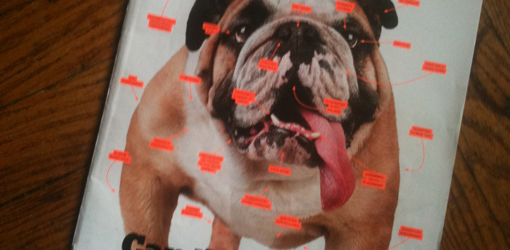Why diversity is good… (or Aww, what have we done?!)
Posted on December 21, 2011 | posted by: A recent issue of The New York Times Magazine (issued November 27, 2011) had an extensive article on the development of the modern bulldog. The outcomes of selective breeding (or the design) of this breed forced me to wonder how human values impact the health of other creatures. The article, titled, “The short, brutish life of the bulldog is putting the future of the breed at risk” does an excellent job of presenting both sides of the argument around the designed genetic selection of the bulldog. For me however it was clear that one side is arguing from a more developed vantage point.
A recent issue of The New York Times Magazine (issued November 27, 2011) had an extensive article on the development of the modern bulldog. The outcomes of selective breeding (or the design) of this breed forced me to wonder how human values impact the health of other creatures. The article, titled, “The short, brutish life of the bulldog is putting the future of the breed at risk” does an excellent job of presenting both sides of the argument around the designed genetic selection of the bulldog. For me however it was clear that one side is arguing from a more developed vantage point.
The author of the article cites Charles Darwin in a quote from Darwin’s book “The Variation of Animals and Plants Under Domestication.” Darwin wrote, “Some of the peculiarities characteristic of the several breeds of the dog have probably arisen suddenly, and though strictly inherited may be called monstrosities; for instance the shape of the head and the under-hanging jaw in the bulldog. … A peculiarity suddenly arising, and therefore in one sense deserving to be called a monstrosity, may however be increased and fixed by man’s selection.” Here the author uses Darwin to illustrate perfectly the ethical implications of man’s role in selective breeding. The author, Benoit Denizet-Lewis, presents further the long list of genetic misgivings that the breed now bares but also does a great job of exploring the reasons why the breeders are supporting these genetic combinations.
Despite the long list of health defects that the dogs experience and the acknowledgement of the harm done many of the breeders that the author interviews simply can’t or won’t look past their own values. It becomes clear that they are unable to give up their expectations of what a bulldog should look like in exchange for the health and longevity of their beloved animals. Here lies the problem: The expectations and incentive structures for healthy design aren’t in alignment.
Denizet-Lewis asks in their article, “Can bulldogs be redesigned?” I think the answer is yes. However, these obstacles of expectation and incentive remain. The author interviewed Jemima Harrison of the organization Pedigree Dogs Exposed. She had this to say, “If breeders were willing to breed to dogs with fewer exaggerated characteristics and judges in the show ring began rewarding those dogs, change could happen.”
To me this is the greatest challenge to designers – knowing how and when to challenge normative values and doing so in a way that is impactful, well-informed, and sustainable.
Authored by Rashid Owoyele